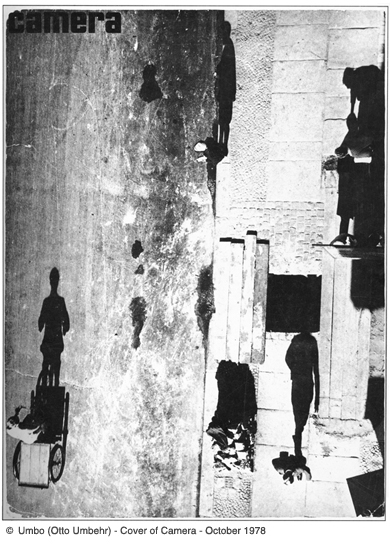The different look moves and captures the image
© Eduardo Ruigómez
1. The different look
Cosimo was in the oak. The branches stirred, like bridges high above the earth. There was a gentle wind; the sun shone. The sun was between the leaves, and we had to put our hand over our eyes to look at Cosimo. Cosimo looked at the world from the tree; seen from up there, everything was different, and that in itself was fun. (Italo Calvino: The Baron in the Trees)
 Spring 1975. An excursion with my little brothers to the hills of El Escorial, equipped with paper and paint. We sit on the top of mount Abantos, unaware that we are seizing a luminous morning. A few steps away from one another, we look at the space that surrounds us, the monastery and the mountains in the background. Looking is activated; explorers of the new engrave in our memory the impact of that which surprises us. Each explorer is concentrated in himself, abandoned to his emotions, composing a drawing that intuitively reflects what he feels. The age difference doesn’t distort the impetus of brains that are eager to express themselves.
Spring 1975. An excursion with my little brothers to the hills of El Escorial, equipped with paper and paint. We sit on the top of mount Abantos, unaware that we are seizing a luminous morning. A few steps away from one another, we look at the space that surrounds us, the monastery and the mountains in the background. Looking is activated; explorers of the new engrave in our memory the impact of that which surprises us. Each explorer is concentrated in himself, abandoned to his emotions, composing a drawing that intuitively reflects what he feels. The age difference doesn’t distort the impetus of brains that are eager to express themselves.
The personal view filters reality to the taste of each one, because everyone sees what he wants to see. It is the different view that lives in each one of us: individual, clean, spontaneous. Everything that surrounds us is new. And when we cross those views and contrast them in a group exercise, an enriching revelation comes up: there is someone who unknowingly invents impressionism when he paints the mountain as a volcano of color, or who competes in precision with Juan de Herrera in the drawing of the monastery. Other views abstract the essential to obtain the simplicity of beauty: the monastery and the hill; or the luminous sky full of the sun and stars dominating a barren landscape.
And now I ask myself: how could we then believe that we were all in the same landscape? The fruits of the pictures we made showed dissimilar paradises. Under the coverage of Cosimo, it is as if each one of the excursionists climbed a different tree in the same small garden. It is enough to obtain a different view.
2. It moves and captures the image
What I liked best was to go out alone and aimlessly on my bike. Only to see the world around me in a different way as you see it on foot, to see it flow at full speed under the tires and at eye level, like strips of color that turn round and round. (Herta Müller: The King Bows and Kills)
 The creative act develops in our brain, even as technology insists on domesticating our inclinations. The different view moves to capture the image. As in dancing steps, the change of positions stimulates our senses. East, west, up, down. The voracious view always finds a better angle. Our eyes are the protagonists that show what they see, while the camera is a black box. The act of taking a photograph requires exercising our senses. Technology oxidizes that intellectual exercise, making it easy to shoot the infinite void without blinking.
The creative act develops in our brain, even as technology insists on domesticating our inclinations. The different view moves to capture the image. As in dancing steps, the change of positions stimulates our senses. East, west, up, down. The voracious view always finds a better angle. Our eyes are the protagonists that show what they see, while the camera is a black box. The act of taking a photograph requires exercising our senses. Technology oxidizes that intellectual exercise, making it easy to shoot the infinite void without blinking.
The movement of our bodies creates a biased image. It is the echo of perfection. We search for the unpolluted angle; we circle the space without loosing the point that aims at our objective. The trophy is reached with the impact of surprise. Only that which is different, is interesting. We sharpen our view, twist the body. Otto Umbher needs to fly through the attics to capture an image that shows the reality of the street many metres below his camera. Herta Müller looks at the sweeping flow of asphalt and the horizon from her bike. One street, many streets. One street, many views.
In nº 13 of 1:1 Photo Magazine we present the works of four photographers with different views, in the style of Zhuang Zi, silent, without ceasing to speak: Pepa de Rivera shows us the spirit to overcome pain through the eyes of a girl, Viviana Peretti tracks the alienated shadows that live in the urban landscape, Jacqueline Salmon explores the absence and presence of characters portrayed in the limits of their space, and Jaroslav Kocián returns to the magazine with 14 family portraits throughout time. Four photographers, four views.
